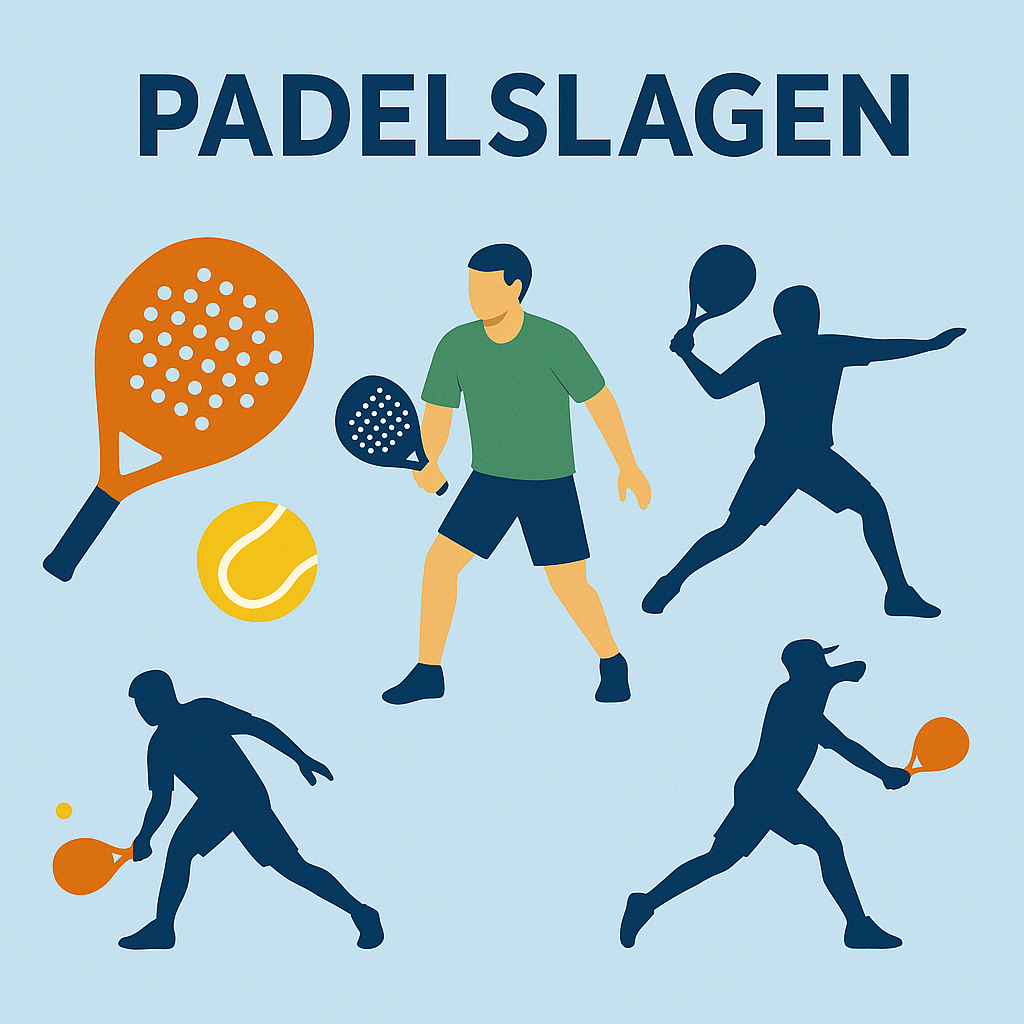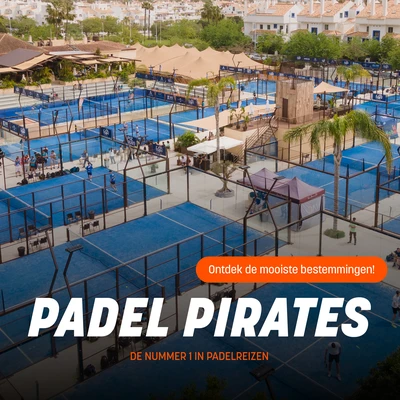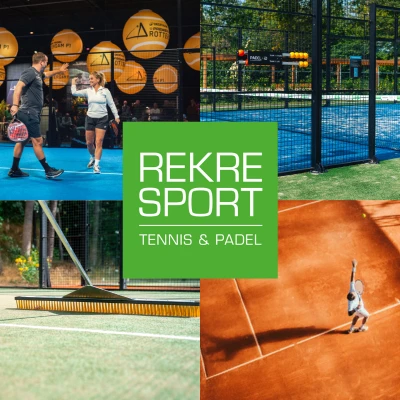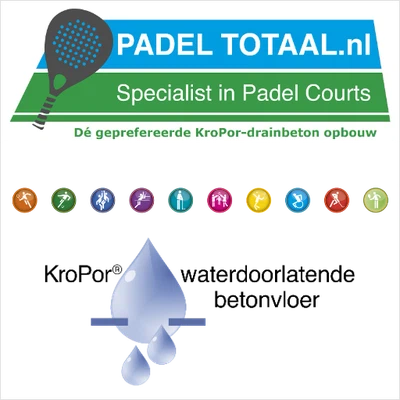De ultieme gids voor padelslagen
Leer de beste technieken en verbeter je spel
Wil je een betere padelspeler worden? Dan is het belangrijk om de verschillende slagen in padel te beheersen. Elke slag vereist een andere techniek en toepassing, afhankelijk van de situatie op de baan. Door de juiste slag op het juiste moment te gebruiken, krijg je meer controle over het spel en dwing je je tegenstanders in een verdedigende positie. In dit artikel bespreken we de meest gebruikte slagen in padel en geven we je tips om deze te verbeteren.
Waarom is het beheersen van verschillende slagen belangrijk?
Padel is een dynamische sport waarbij de ene situatie snel over kan gaan in een andere. Om goed te kunnen anticiperen op het spel van je tegenstander, moet je flexibel zijn in je slagkeuze. Elke speler heeft zijn eigen voorkeuren, maar door verschillende slagen uit te proberen, kun je ontdekken welke het beste bij je spel passen. Bovendien helpt het je om je zwakke punten te identificeren, zodat je deze kunt verbeteren. Hieronder vind je een overzicht van de belangrijkste slagen in padel, met een uitgebreide beschrijving van hun techniek en toepassing.
Volley
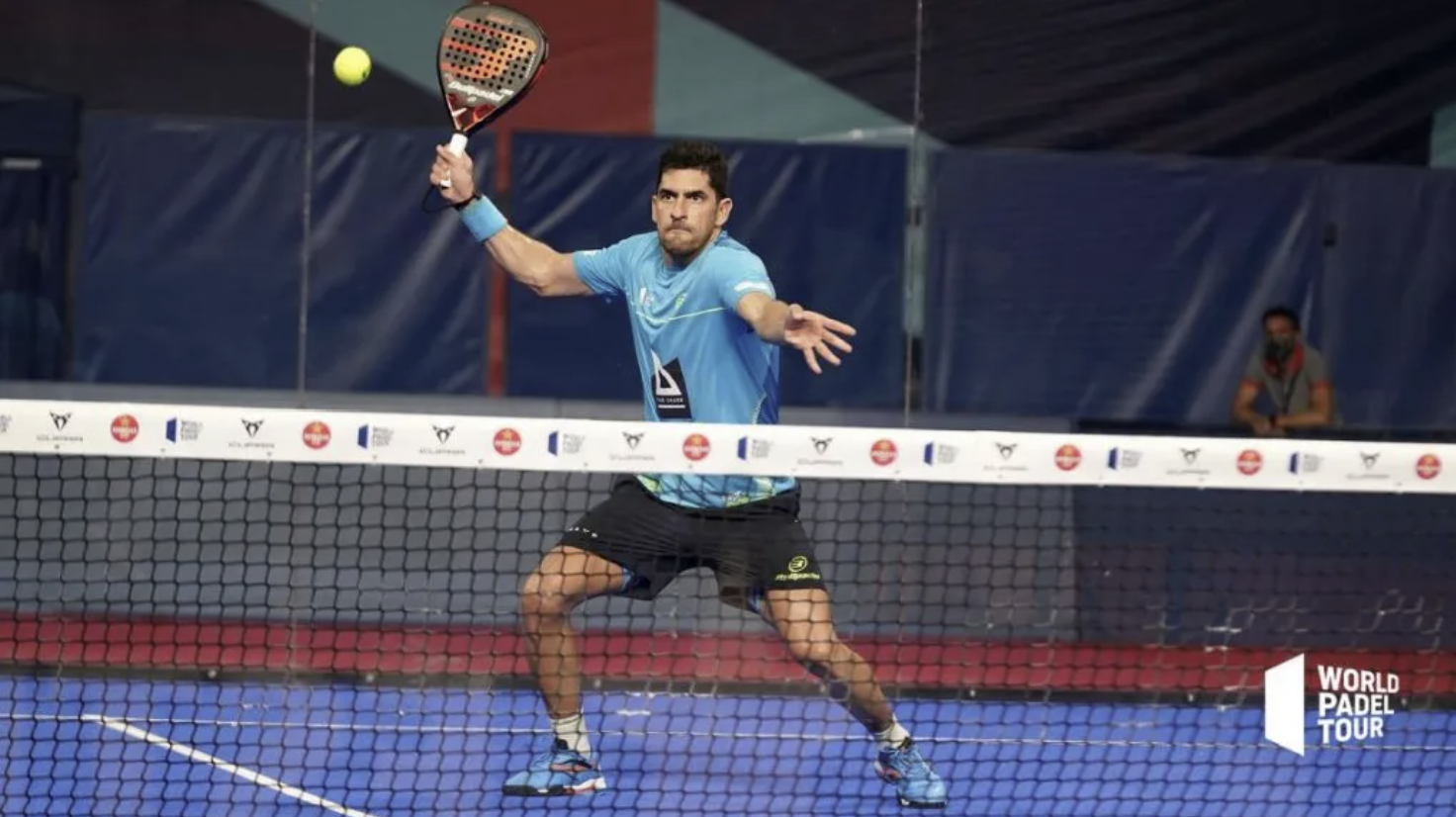 De volley is een van de meest gebruikte slagen in padel en wordt gespeeld voordat de bal de grond raakt. Het is een offensieve slag die vaak dicht bij het net wordt uitgevoerd. Een goede volley dwingt de tegenstander om snel te reageren, omdat de bal direct terug in het spel wordt gebracht. Het doel is om de bal laag en snel over het net te spelen, zodat de tegenstander moeite heeft om de bal te retourneren.
De volley is een van de meest gebruikte slagen in padel en wordt gespeeld voordat de bal de grond raakt. Het is een offensieve slag die vaak dicht bij het net wordt uitgevoerd. Een goede volley dwingt de tegenstander om snel te reageren, omdat de bal direct terug in het spel wordt gebracht. Het doel is om de bal laag en snel over het net te spelen, zodat de tegenstander moeite heeft om de bal te retourneren.
Techniek:
- Houd het racket hoog en je lichaam in een agressieve, vooruit gerichte positie.
- Speel de bal met een korte, gecontroleerde beweging en vermijd grote slagen om de controle te behouden.
- Probeer de bal naar de hoeken te plaatsen om de tegenstander te dwingen meer te bewegen.
Vibora
De vibora is een gevorderde slag, die het midden houdt tussen een smash en een slice. Deze slag geeft de bal een zijwaartse draai, wat het lastig maakt voor de tegenstander om de bal goed te retourneren. De vibora wordt meestal gespeeld vanuit een aanvallende positie en kan een verrassend effect hebben op de tegenstander.
Techniek:
- Positioneer je schuin achter de bal en gebruik een zijwaartse swing.
- Zorg voor een goede polsbeweging om de bal een slice mee te geven.
- Richt de bal naar de zijwand om de tegenstander nog meer onder druk te zetten.
Smash
De smash is een van de krachtigste slagen in padel. Deze slag wordt boven het hoofd uitgevoerd en heeft als doel om de bal met veel snelheid naar de grond te slaan. Een goed uitgevoerde smash kan leiden tot een punt of een zeer lastige situatie voor de tegenstander.
Techniek:
- Positioneer jezelf goed onder de bal voordat je slaat.
- Houd je racket hoog en sla met een krachtige, neerwaartse beweging.
- Richt de bal naar de hoeken of langs de lijn om het je tegenstander moeilijk te maken.
Slice
De slice is een veelzijdige slag waarbij de bal met backspin wordt gespeeld, wat ervoor zorgt dat hij lager en trager stuitert. Deze slag is vooral effectief in verdedigende situaties of om de tegenstander in een ongemakkelijke positie te brengen.
Techniek:
- Speel de bal met een licht open racketblad en veeg onder de bal door om backspin te creëren.
- Richt de bal diep in het veld van de tegenstander om ze te dwingen een moeilijke return te spelen.
- Gebruik de slice om de snelheid uit het spel te halen en het tempo te bepalen.
Service
In tegenstelling tot tennis wordt de service bij padel onderhands uitgevoerd. De bal moet onder navelhoogte worden geraakt en eerst stuiteren op de vloer achter de servicelijn voordat hij diagonaal in het servicevak van de tegenstander komt. Een gevarieerde service kan je helpen om je tegenstander in een ongemakkelijke positie te brengen.
Techniek:
- Houd het racket laag en sla met een vloeiende beweging.
- Wissel de snelheid en richting van je service af: tegen het raam, langs de middenlijn of direct op de tegenstander.
- Je hebt twee kansen voor een service, dus durf bij de eerste poging meer risico te nemen.
Lob
Een lob is een tactische slag waarbij je de bal hoog over de tegenstander slaat, met als doel hen weg van het net te dwingen. Een goede lob kan ervoor zorgen dat je tegenstander in een verdedigende positie terechtkomt en jij weer controle krijgt over het spel.
Techniek:
- Gebruik een zachte, opwaartse beweging om de bal hoog en diep in het veld te spelen.
- Let op de positie van je tegenstander en richt de lob over hun hoofd of richting de achterwand.
- Een goed geplaatste lob kan ruimte creëren om de netpositie in te nemen.
Dropshot
De dropshot is een subtiele slag die bedoeld is om de bal met minimale snelheid net over het net te laten vallen. Het doel is om de tegenstander te verrassen en hen te dwingen om hard te rennen om de bal te bereiken.
Techniek:
- Sla met een zachte beweging, net voldoende om de bal over het net te krijgen.
- Plaats de bal zo dicht mogelijk bij het net om het moeilijk te maken voor de tegenstander om hem op tijd te halen.
- De dropshot is vooral effectief wanneer je tegenstander zich ver naar achteren bevindt.
Drive
Een drive is een krachtige, vlakke slag die meestal vanaf de achterkant van het veld wordt gespeeld. Het is een basis slag die je gebruikt om de bal diep in het veld van de tegenstander te slaan, met als doel om ze onder druk te zetten.
Techniek:
- Sla de bal met een vloeiende, voorwaartse beweging.
- Richt de bal diep in het veld van de tegenstander, idealiter naar de hoeken.
- Een goed geplaatste drive kan de tegenstander dwingen om ver terug te bewegen, wat je de kans geeft om de netpositie over te nemen.
Chiquita
De chiquita is een korte, tactische slag die wordt gebruikt wanneer je tegenstander dicht bij het net staat. Het doel is om de bal zachtjes in de voeten van je tegenstander te spelen, waardoor het moeilijk wordt om een effectieve volley uit te voeren.
Techniek:
- Sla de bal zachtjes met een korte beweging, net genoeg om hem over het net te krijgen.
- Richt de bal laag en dicht bij de voeten van je tegenstander om hen te dwingen een ongemakkelijke slag te maken.
- De chiquita is een effectieve manier om het tempo te breken en je tegenstander in de verdediging te dwingen.
Bandeja
De bandeja is een defensieve tot neutrale slag die vaak wordt gebruikt als een reactie op een lob. Het is een technische slag die wordt gespeeld met topspin, bedoeld om de bal gecontroleerd terug te spelen en tegelijkertijd de netpositie te behouden.
Techniek:
- Bereid de slag voor door je elleboog op schouderhoogte te houden en het racket iets open te houden.
- Het raakpunt ligt rond hoofdhoogte, afhankelijk van wat je met de bal wilt doen.
- Zwaai van hoog naar laag en naar voren om de bal gecontroleerd te slaan.
Bajada
De bajada is een krachtige slag waarbij de bal naar beneden wordt geslagen nadat deze van een van de glazen muren is gestuiterd. Deze slag vereist een goede timing en kan zeer effectief zijn om een punt af te maken.
Techniek:
- Wacht tot de bal van de wand terugkomt en sla met een krachtige neerwaartse beweging.
- Gebruik de bajada om druk te zetten op de tegenstander en het punt snel af te maken.
Het beheersen van deze verschillende slagen in padel is essentieel voor het verbeteren van je spel. Elke slag heeft zijn eigen functie en kan, wanneer op het juiste moment gebruikt, een groot voordeel bieden. Door regelmatig te oefenen en te experimenteren met deze slagen, kun je een veelzijdige en onvoorspelbare speler worden die in elke situatie de juiste beslissing neemt.
Veelgestelde vragen over padel slagen
Wat is het verschil tussen een bandeja en een vibora
De bandeja is een verdedigende smash die vaak meer naar achteren wordt gespeeld, terwijl de Vibora een aanvalssmash is die dichter bij het net genomen wordt. Beide smashes hebben dan ook een ander doel.
Als je in een wedstrijd schaak wilt spelen, moet je een bandeja gebruiken - de vertragende defensieve smash. Het doel is om je positie aan het net te behouden door aan de onderkant van de bal te raken, meestal op 6 uur. Als je dit goed doet, zou er veel backspin worden toegevoegd die ervoor zorgt dat de bal naar beneden springt als hij de muur raakt. De bandeja is dus een handige techniek voor degene die houdt van een langzame, gecontroleerde verdediging.
De vibora is een snelle aanvalsslag met veel spin die gericht is op het winnen van het punt in één keer. Het doel is dat je bal de muur raakt aan de zijkant, waardoor er veel sidespin op de bal komt. Wanneer de bal dan de muur raakt, zal hij duidelijk naar rechts springen (voor rechtshandige spelers) of naar links (voor linkshandige spelers). Deze slag wordt vaak gespeeld als je meer tijd hebt om voor te bereiden en stil te staan, wat ook wel 'luister naar de radio' genoemd wordt. Er zit veel kracht en energie in je arm wanneer je de bandeja speelt, iets wat je lijf helpt te beheersen.
Met de vibora houd je je racket achter je hoofd en maak je gebruik van een gebogen elleboog. Hiermee draait u uw bovenlichaam meer mee en slaat u om de bal heen, met een raakpunt aan de zijkant van de bal in plaats van de onderkant. U slaat ook wat harder waardoor het voor uw tegenstander moeilijker is om de bal in de hoek te verdedigen.
Hoe vaak mag je een service slaan?
Je hebt twee mogenlijkheden met opslaan.
Als de bij de service de bal het net raakt en er toch overheen gaat, wat dan?
Als de bij de service de bal het net raakt en er toch overheen gaat, dan is de bal in, en moet deze opnieuw worden gespeeld.
Gaat de bal na de netband over het net, stuitert op de grond en raakt hij de dan het hek, dan is de service verkeerd.
Indien de bal na de netrand uit gaat, of rechtstrees tegen het hek of het raam is de bal ook uit.
Wat zijn de fundamentele slagen in padel?
De basis slagen in padel omvatten de forehand, backhand, service (opslag), volley, en smash. Deze slagen vormen de kern van het spel, waarbij elke slag unieke technieken en strategieën heeft.
Hoe voer ik een effectieve service uit in padel?
Een effectieve service in padel wordt onderhands uitgevoerd. Laat de bal stuiteren en raak hem op het laagste punt net achter de servicelijn. Richt op variatie in snelheid en richting om je tegenstander te verrassen.
Wat zijn de sleutels tot een krachtige smash in padel?
Voor een krachtige smash, positioneer jezelf goed onder de bal, gebruik een volledige armzwaai, en sla de bal op het hoogste punt. Combineer kracht met precisie om de bal buiten bereik van je tegenstanders te plaatsen of tegen de glazen wanden te laten kaatsen.
Hoe kan ik mijn volley verbeteren?
Om je volley te verbeteren, sta dicht bij het net en houd je racket voor je met de racketkop omhoog. Gebruik korte, snelle bewegingen zonder de racket ver achter je te halen. Timing en positiespel zijn essentieel om effectieve volleys te slaan.
Zijn er speciale slagen in padel die uniek zijn voor deze sport?
Ja, padel kent enkele unieke slagen zoals de 'bandeja', een soort overhead volley voor defensieve doeleinden, en de 'chiquita', een zachte, geplaatste bal die gebruikt wordt om de tegenstanders uit positie te brengen. Deze slagen vereisen specifieke vaardigheden en tactisch inzicht.
Hoe kan ik de bal effectief langs de wanden spelen?
Het benutten van de wanden is cruciaal in padel. Leer de bal te lezen en anticipeer op de richting en snelheid na de kaats. Gebruik zowel de achterwand als de zijwanden om de bal terug te spelen, vaak met een mix van kracht en precisie om je tegenstander te verrassen.
Wat is de beste manier om mijn slagen te oefenen?
Consistente oefening met een focus op techniek is essentieel. Werk met een coach of oefenpartner, gebruik een bal machine voor herhaalde slagen, en speel veel wedstrijden om ervaring op te doen. Videofeedback kan ook zeer nuttig zijn om je techniek te analyseren en te verbeteren.
Hoe pas ik mijn strategie aan op basis van mijn slagen?
Je spelstrategie in padel moet je sterke slagen benutten en je zwakke punten minimaliseren. Ontwikkel een mix van agressieve slagen zoals smashes en geplaatste ballen zoals volleys en chiquitas, om je tegenstanders onder druk te zetten en fouten uit te lokken.
Wat zijn veelvoorkomende fouten bij het slaan in padel?
Veelvoorkomende fouten omvatten slechte voetpositie, het niet correct raken van de bal, overmatig gebruik van kracht zonder controle, en het niet aanpassen van slagen aan de positie van de tegenstander. Focus op techniek en strategisch spel om deze fouten te verminderen.
Zijn er oefeningen om mijn reactietijd en slagvaardigheid te verbeteren?
Ja, oefeningen zoals snelle voetenwerk drills, reactieoefeningen met een snelle baluitwisseling aan het net, en oefeningen met een onvoorspelbare balrichting kunnen helpen om je reactietijd en slagvaardigheid te verbeteren.









